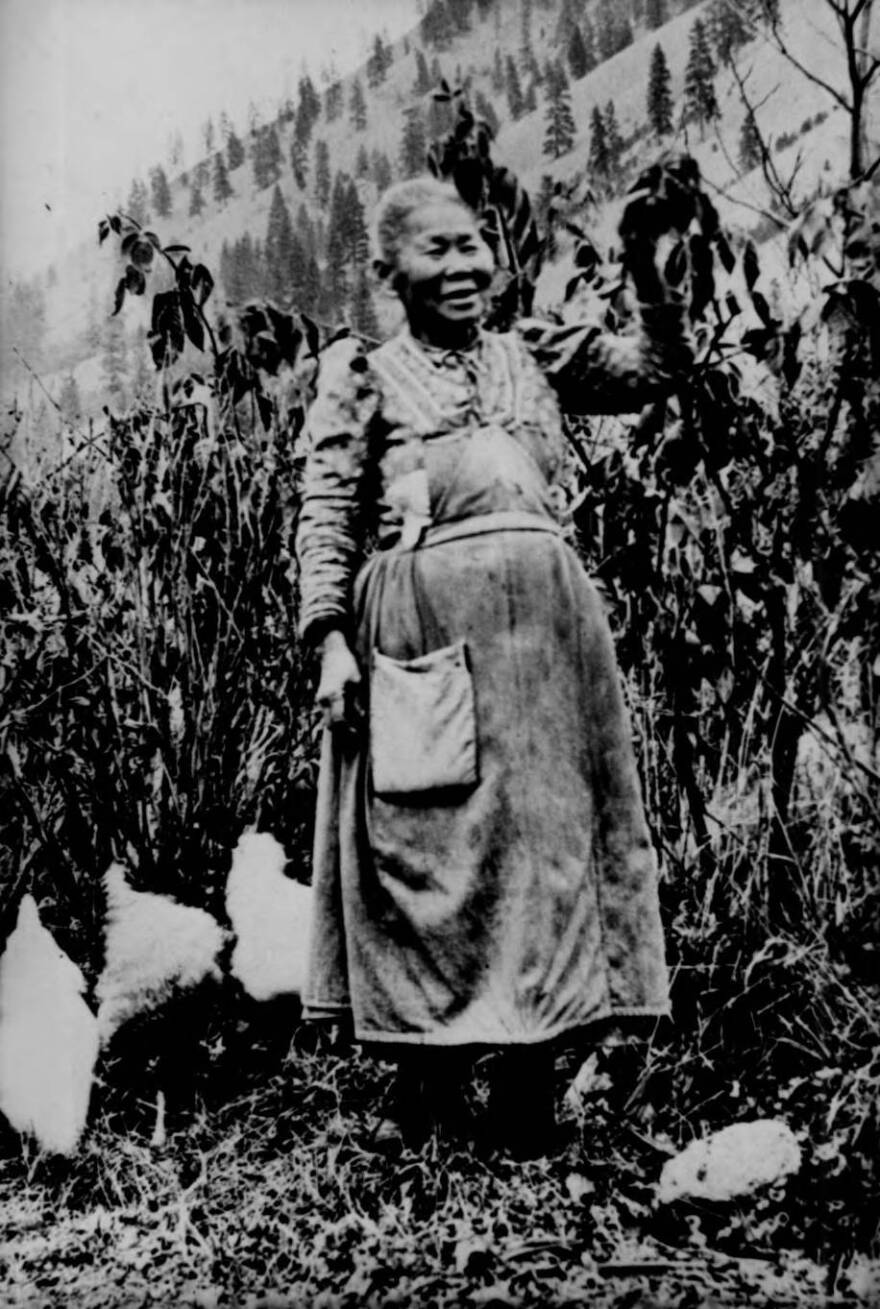The legacy of Polly Bemis, one of Idaho’s most famous pioneers, is expanding after researchers confirmed the discovery of an apple on her Salmon River ranch thought lost to history.

After years of genetic testing and DNA analysis beginning in 2019, a medium-sized, sweet red and green apple found on the property now carries Bemis’s name as a unique variety.
Bemis came to Warren in the Idaho Territory in 1872 as a likely concubine after being purchased for $2,500 by a wealthy Chinese man, according to the University of Idaho.
Eventually, she married Charlie Bemis in 1894, and the two moved to the ranch where they lived for a few decades.

The story of rediscovering the apples the Bemises tended to begins in 2018 when E.J. Brandt co-founded the Lost Apple Project.
Brandt, a retired electrical technician from Troy, Idaho, wanted to find a way to give back to society. One day, he got a tip there were some strange apples on an old farm near his home, so he went to check it out.
“I took a bite of the apple and it was just delicious and I did not know what it was,” he said.
After sending in a sample to apple experts in Oregon, they told Brandt he had just found a variety thought to be extinct: the Regmalard. From that moment, he was hooked.

Just a year later in 2019, Brandt got an invitation to visit the Polly Bemis Ranch east of Riggins to take a look at apple trees on the property. The remote ranch is only accessible by boat or plane.
After arriving on a jet boat, the ranch’s caretaker pointed Brandt to two particular trees near a creek.
That’s where he found the unique looking apples.
“It had splotches of red, green, some rustic stripes onto it.”
They were sweet, too – about a 70/30 split of sweetness versus tartness, according to Brandt. The caretaker told him apples from those two trees are favorites of the local bears come fall.
The large omnivores are one of the biggest threats facing these old trees.
“He’ll climb up the tree, go halfway up, grab both of his paws and violently shake the tree to knock the apples down onto the ground. Then he goes back down and just gorges himself,” Brandt said, potentially damaging the tree.
These historic trees can live more than 100 years, he said, making it all the more critical to find and preserve them now as they near the end of their lives.
Brandt sends samples of historic trees he finds to heritage orchards to preserve their legacy. Each year, the Lost Apple project also sells grafted trees to the public to grow themselves.
Follow James Dawson on Twitter @RadioDawson for more local news.
Copyright 2023 Boise State Public Radio



